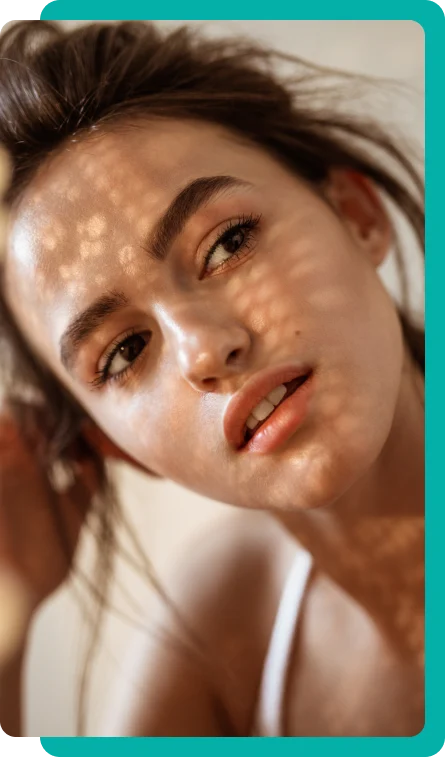For Patients
About
For Providers
Locations
Blog
Contact
Menu
Cheek fillers, a buzzword you've likely heard on the grapevine of cosmetic enhancement, are helping people redefine their facial aesthetics, one treatment at a time.
As we age, our faces naturally lose subcutaneous fat, causing the cheeks to lose their plumpness and begin to sag.
Cheek fillers step in to combat this, providing a refreshed, youthful look that many of us strive for.
Like any other cosmetic treatment, it's completely normal to have a boatload of questions about what it entails - from how it works, its safety profile, and potential side effects, to the expected longevity of results.
That's precisely why we're here, ready to dive deep into your most pressing questions about cheek fillers. This comprehensive guide is set to unmask the realities of this popular non-surgical procedure, offering a clearer picture of what to expect.
So sit back, relax, and prepare to expand your understanding of the world of cheek fillers – no stone will be left unturned!
Cheek fillers are injectable dermal fillers designed to add volume to your cheeks. As we age, it's natural for our skin to lose its elasticity and our cheeks to lose their fullness, leading to a more aged appearance.
Cheek fillers work to counter this, restoring volume and contour to the face for a more youthful and vibrant look.
But what's in these fillers? Most cheek fillers today use hyaluronic acid, a naturally occurring substance in our bodies that helps to keep our skin hydrated and voluminous. When injected into the cheeks, hyaluronic acid fillers draw water into the area, giving your cheeks a plumper, more lifted appearance.
However, hyaluronic acid isn't the only player in the game of cheek fillers. Some treatments utilize other substances like collagen, calcium hydroxyapatite, and poly-L-lactic acid.
Collagen, like hyaluronic acid, is a natural protein found in our bodies that provides structure to our skin. Calcium hydroxyapatite is a mineral-like compound naturally found in human bones, while poly-L-lactic acid is a biocompatible synthetic substance.
These ingredients can stimulate collagen production in the skin, providing a longer-term improvement in skin texture and volume.
This diversity of filler options allows for tailored treatments, ensuring that each individual's unique aesthetic goals and facial anatomy can be appropriately addressed.

Dermal fillers come in several varieties, with hyaluronic acid (in brands like Juvederm and Restylane), and polylactic acid (Sculptra), being among the popular ones. So, how do you choose?
A consultation with a licensed provider can help you navigate this. They'll take into account your specific needs, medical history, and potential allergies.
Hyaluronic acid fillers are often the go-to as they're safe, don't require allergy testing, and deliver a natural lift. They last for 6 to 18 months on average, while Sculptra can stretch up to 2 years.
Getting cheek fillers isn't a place to skimp. Avoiding discounted or unlicensed providers can save you from potential complications.
Always ensure you're in the hands of a trained provider and remember to consult resources like the American Society of Plastic Surgeons to find a reputable one near you.
When considering cosmetic enhancements like cheek fillers, being informed about the process can make the journey feel less daunting and more empowering. It's essential to demystify the procedure to understand what it entails fully, and more importantly, what to expect.
The procedure for administering cheek fillers can be broken down into a series of carefully orchestrated steps:
The longevity of your cheek fillers largely depends on the type of filler used and your body's metabolism. Hyaluronic acid-based fillers like Juvederm and Restylane generally last anywhere from 6 to 18 months.
Some types of fillers, like Sculptra and Radiesse, are designed to stimulate your body's natural collagen production and may last up to two years.
Your lifestyle, age, and the condition of your skin all play a role in how long your results will last. Regular follow-up sessions can help maintain your refreshed and youthful appearance.
Primarily, people looking to enhance their natural appearance without resorting to cosmetic surgery make good candidates.
If you're aiming to emphasize your cheekbones by adding volume or restoring what time and age have taken away, cheek fillers could be an excellent choice.
People with good skin elasticity and overall robust health are also considered suitable candidates. However, if you have chronic health conditions, it's crucial to discuss these with your provider as they may affect your treatment outcomes.
Balancing facial symmetry is another goal of aesthetic enhancements. For instance, it's often recommended to pair cheek fillers with tear-trough fillers to avoid an overfilled look.
If you're unsure whether cheek fillers are the right choice for you, never hesitate to consult with a seasoned cosmetic practitioner. They'll guide you on your suitability for the treatment, outline the treatment plan, and discuss the possible costs involved in the procedure.
Generally, cheek fillers are safe when administered by a certified professional. However, like any cosmetic procedure, there can be side effects.
Some people may experience temporary redness, swelling, or bruising at the injection site, which usually heal within a few days. Applying an ice pack can help alleviate these symptoms, rather than resorting to over-the-counter painkillers.
Rarely, more serious complications, such as punctured blood vessels and filler leakage, can occur. However, these risks can be significantly reduced when the procedure is conducted by an experienced practitioner.
Hyaluronic acid fillers, commonly used in cheek fillers, are unlikely to trigger allergic reactions. Nonetheless, it's always best to discuss your medical history and any known allergies with your provider to ensure your safety.
Like most cosmetic procedures, the cost of cheek fillers varies widely, depending on a range of factors. These can include the type of filler used, the volume of filler required, and the expertise of the practitioner.
On average, you might expect to shell out around $500 to $600 per syringe of dermal filler. Remember that achieving your desired aesthetic could require multiple syringes.
For instance, renowned hyaluronic acid fillers like Juvederm and Restylane could cost approximately $682 per syringe, while polylactic acid fillers like Sculptra are a bit pricier, around $915 per syringe.
Cheek fillers are generally seen as elective cosmetic procedures, which means they usually don't make the cut for health insurance coverage. Other factors that may influence the cost include the clinic's location, the provider's pricing policies, and the level of demand for their services.
Before diving in, remember to consult with a licensed and experienced provider. They'll assess your facial features, understand your aesthetic goals, and suggest the most suitable filler type for you.

At Dr. Lanna Aesthetics, we believe in the art of accentuating your natural beauty. If you've been dreaming about enhancing your cheek contour and rejuvenating your appearance, our team of skilled practitioners is ready to make your dreams come true with our tailored cheek filler treatments.
With a variety of top-quality dermal fillers like Juvederm, Restylane, and Radiesse, we craft a personalized plan aligning with your aesthetic desires. Our procedures aren't just about adding volume—they're about enhancing your unique features for a fresher, youthful glow.
Interested? Contact us today to schedule your consultation. It's your chance to explore your options, have your questions answered, and start on your journey to a more confident self. At Dr. Lanna Aesthetics, your radiant beauty is our mission. Let's craft your stunning transformation, together.

New Patients Enjoy $100 OFF on Tox or Filler Appointments!
*minimum 1 full syringe or minimum 25 units; Cannot be combined
